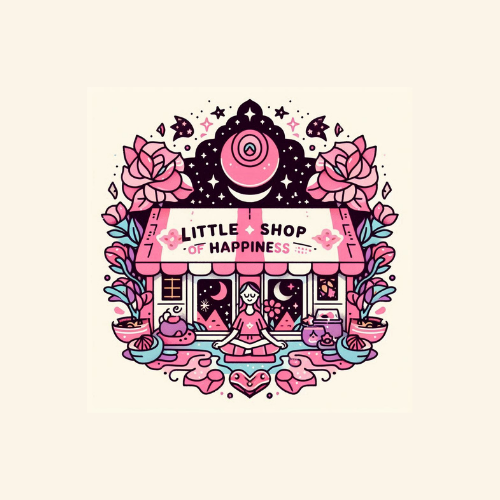Ever caught yourself daydreaming of a spot where worries just melt away? That’s your mind working on building a ‘happy place.’ This isn’t just a fluffy concept from wellness trends. It’s got some serious psychological backing. A happy place is a mental sanctuary we create to escape stress and chaos, even if just for a moment.
Imagine a place where your shoulders feel less tense and your mind hits pause on its endless streaming of daily concerns. That’s the psychology of a happy place at work, providing a break to recharge your emotional batteries. It’s like a mini-vacation for your mind without booking any flights.
Our brains are fascinating. Did you know they can craft detailed, immersive zones of tranquility? When you’re mentally creating these havens, your brain engages in what’s called “visual imagery”—a nifty trick that involves processing pictures in your mind’s eye to produce a physical feeling of calm.
Visualisation isn’t just about imagining a place. It has real-world effects. Studies have found that when you envision a serene setting, your body might respond by lowering your heart rate or easing muscle tension. That’s because you’re tapping into the mind-body connection, where your thoughts can directly impact your physical state.
Next time you’re feeling overwhelmed, consider tapping into this built-in feature of your brain. Crafting and visiting your own happy place isn’t just wishful thinking—it’s a legitimate strategy for enhancing mental well-being and finding peace amidst life’s noise.
The Heart of Serenity: Why You Should Cultivate a Happy Place in Your Mind
Think of a mental happy place as your personal refuge. It’s a spot your mind can retreat to when things go haywire. There’s real power in that. Having a place in your imagination where you can mentally escape stress builds emotional resilience, kind of like a cushion for your brain.
When life hands you lemons, using a happy place can help you feel more rooted and in control. It’s like having an emotional anchor. Guiding your thoughts to this mental hideout can slow the carousel of stress and give you that breathing space we all crave sometimes.
So, how do you make a happy place work for you? Give guided imagery a shot. It’s a technique that’s super effective in helping you create these mental escapes. Spend some time vividly picturing scenes that calm you. It could be the beach, a tranquil forest, or even a cosy reading nook—the specifics don’t matter as long as they bring you peace.
Imagining your happy spot before a stressful meeting or after a particularly rough day can do wonders. It’s about finding grounding in your thoughts when you can’t control what’s around you. Making a habit of this can gradually build up your tank of resilience and calm—handy when you need to maneuver around life’s hurdles.
Next thing you know, your mental happy place becomes this go-to tool that flips your day around. Combine this with mindfulness practices and, pretty soon, you’ve got yourself a go-to method for stress-busting, stress-free.
Finding Personalised Joy: Creative Ideas for Your Mental Happy Place
The beauty of a mental happy place is in its customisation. It’s tailored just for you, reflecting your tastes and comforting memories. Maybe it’s the smell of fresh coffee that kicks off your morning bliss or the echo of waves lapping at a distant shore—whatever stirs joy and calm from your past experiences.
Personal memories are the building blocks for your mental retreat. Did family camping trips spark that warm, fuzzy feeling? Or maybe that solo trip to a foreign city etched in serenity? Use these experiences. Pull favourite elements from them and layer them into the mental space you’re blueprinting.
Culture and background can also shape your happy place. Maybe it’s a temple from childhood holidays or a grandmother’s garden where life’s troubles seemed to melt away. These layers add depth and make your escape room unique. It’s about drawing from the well of your experiences and sculpting a place where every detail brings clarity and peace.
If drawing a blank on ideas, think about what naturally pulls you in. Freshly cut grass, the buzz of a coffee shop, or even the hushed whispers of a library. Everyday places can provide unexpected solace. Even if you can’t visit them physically, your mind remembers and knows how to recreate those sensations.
Transitioning ordinary spaces into sanctuaries calls for a bit of creativity and introspection—focus on what feels right, what sounds, smells, and sights soothe you, and you will find yourself in a beautifully crafted personal sanctuary each time you close your eyes.
These aren’t just locations—they are companions in your mental wellness journey, like old friends in new settings.
Sensing Bliss: Tuning Into Your Senses to Enhance Your Happy Place
The five senses are your secret weapon when building a mental sanctuary. Consider how each sense plays a part in bringing your happy place to life. The sight of sunlight filtering through trees, the gentle sound of rustling leaves, the aroma of blooming flowers, the taste of salty sea air, and even the texture of warm sand between your toes—these are all elements that deepen your experience.
Creating a rich sensory environment in your mind isn’t just more realistic—it’s more soothing. These details make your mental getaway more vivid, immersing you completely in relaxation mode. It’s like going to your favourite holiday spot, minus the packing and the hussle and bustle at the airport.
Wisdom from sensory grounding techniques tells us grounding in senses can offer immediate comfort. When stress threatens to take over, focusing on specific sensory aspects can reel you back into calm. Visualise what you see or hear in your happy place to anchor your mind right back to peace.
Want to practice tuning into sensory experiences? Start with small exercises. Close your eyes and draw on specific memories tied to each sense. What does rain smell like? How does grass feel underfoot? Paint these pictures vividly. As you become more adept, you’ll find it easier to conjure up comforting sensations on demand.
Turning up the sensory volume of your mental space is transforming little nudges into a symphony of sensory detail. With these techniques, your trips to this mental paradise become more immersive, tangible, and ultimately, grounding.
Guided Exploration: Crafting and Practising a Happy Place Visualisation
Building a happy place in your mind is like designing a personal getaway tailored just for you without the stress of trip planning. Crafting this space starts with clear intention and vivid imagination, allowing you to savour peace and comfort whenever you need it.
Start your visualisation by choosing a quiet spot where you won’t be disturbed. Close your eyes, take a few deep breaths, and begin to picture your chosen haven. Imagine every detail, from the colours and shapes to the sounds and smells that fill this place.
To make your happy place truly yours, don’t shy away from injecting personal twists. Maybe your perfect spot includes a soothing soundtrack of nature or holds a cherished memory like the warmth of a campfire. These elements personalise and strengthen your connection to this mental retreat.
Shaping and refining your happy place over time keeps it fresh and effective. Revisit and tweak it as you like, perhaps even weaving in new sensory details inspired by recent experiences. This practice not only enriches your visualisation but also enhances your ability to slip into this calm space whenever life demands.
Merging mindfulness with your happy place visualisation can enhance its benefits. Engaging in daily practices like meditation while visiting your happy place can solidify its role as a stress-relief tool. This integration reinforces peace and resilience, ensuring clarity and calm remain within reach no matter the turbulence outside.
Here’s an example to get you started: Picture a peaceful lakeside with a gentle breeze rustling through the trees. The light dances on the water, and the scent of pine fills the air. Feel the warmth of the sun on your skin and the soft earth beneath you. Spend a few moments here, letting the calm wash over you before returning to your day.
I hope you found this article useful, be good to yourself and make use of the happy place waiting for you. We are all made up of such wonderful inner resources, we just need to give ourselves permission to tap into our joy. If I can help you in anyway to discover more, please reach out.
Because happiness begins with you – and as we like to say at Little Shop of Happiness,

With warmth,
Ali


